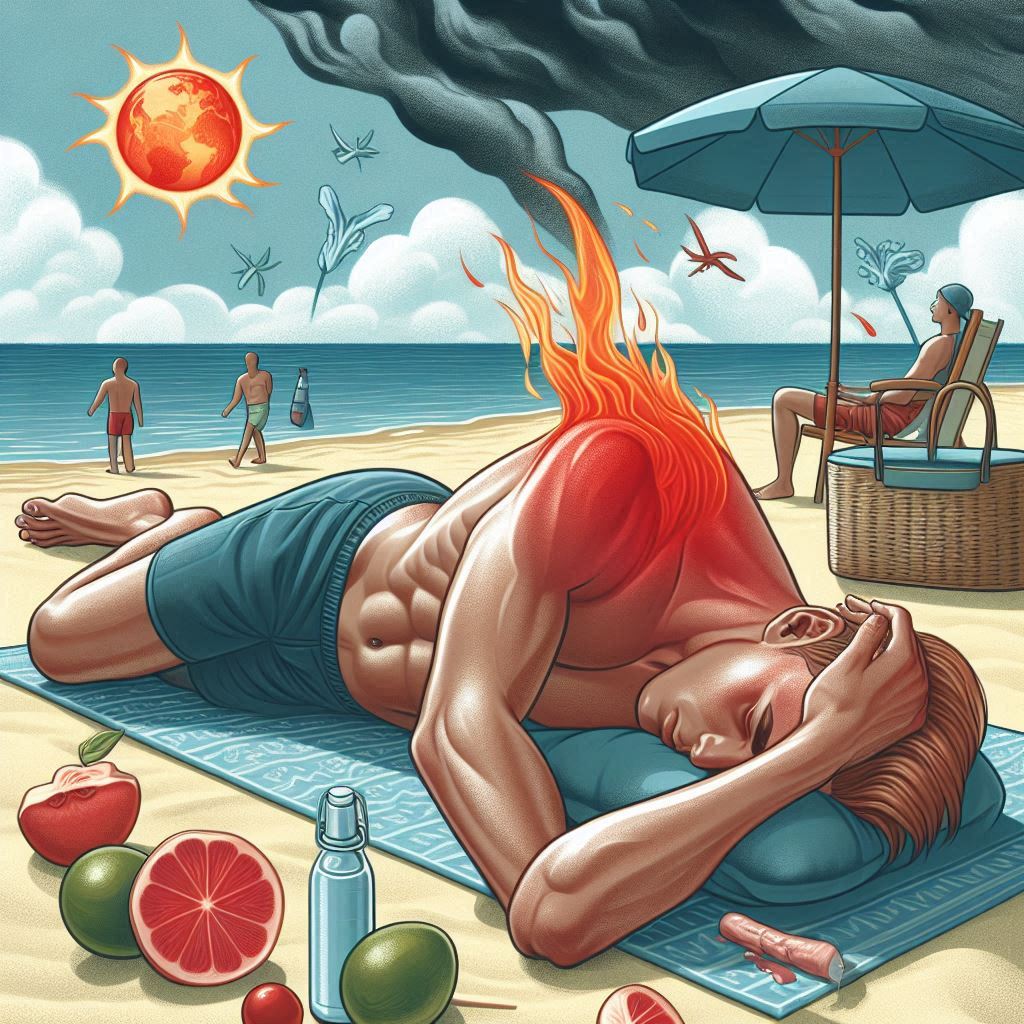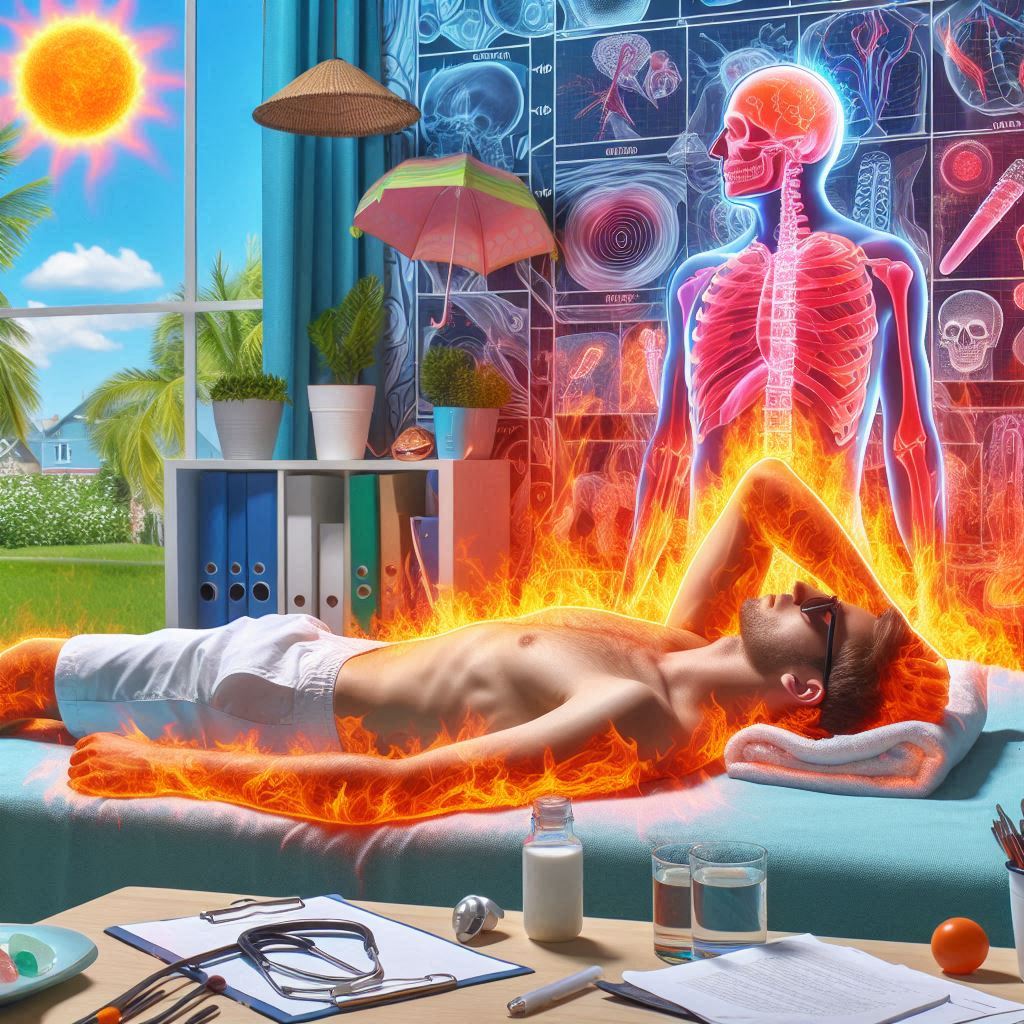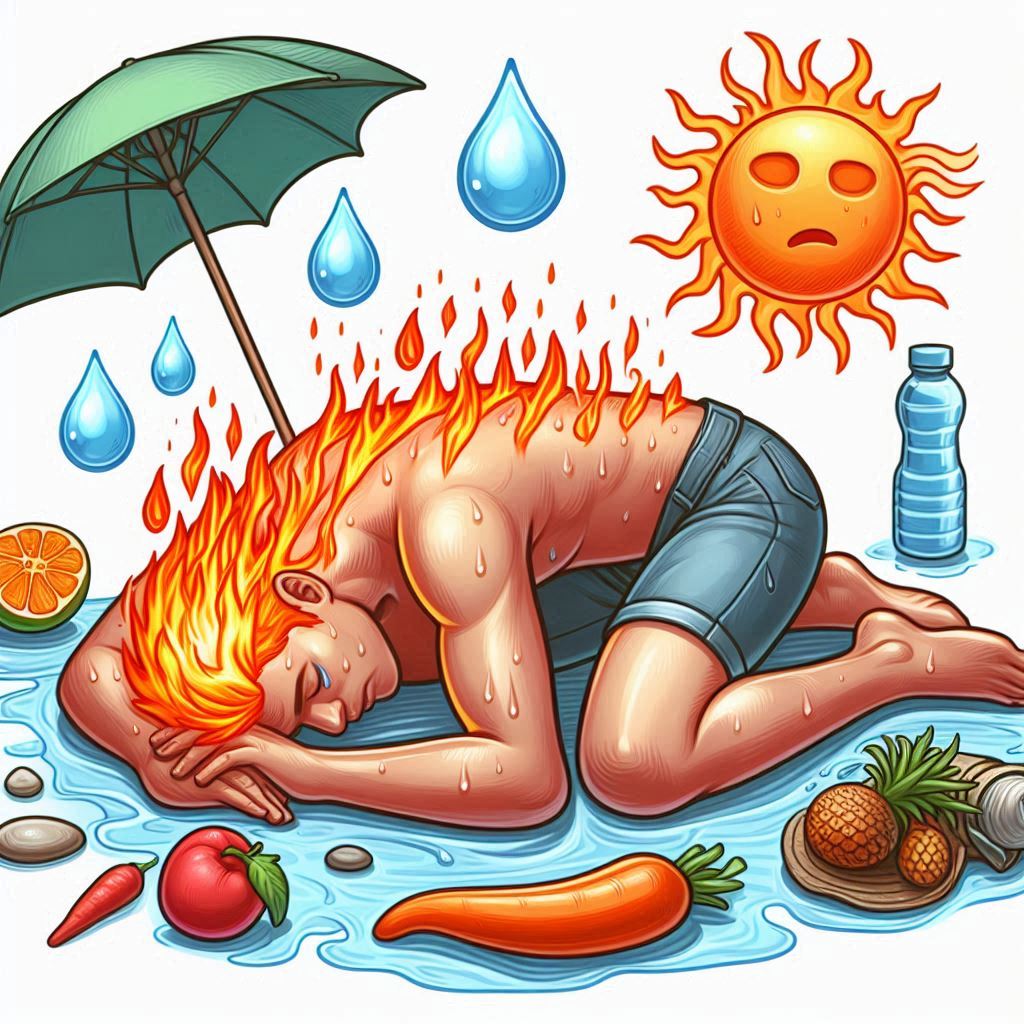在夏天避免中暑的方法跟中暑後的急救措施。
炎熱的夏天導致許多人中暑,預防中暑和中暑後的急救措施非常重要。以下是詳細的預防方法和急救措施:
首先,要保持涼爽。盡量待在有空調的室內,尤其是在正午到下午三點這段時間,因為這是太陽最猛烈的時候。如果沒有空調,可以去公共場所如圖書館、商場等避暑。
其次,穿著適當的衣物也很重要。應穿輕便、寬鬆、淺色的衣物,這樣可以幫助反射部分陽光,保持身體涼爽。同時,戴寬邊帽子或使用遮陽傘,保護頭部和臉部免受陽光直射。
補充水分是預防中暑的另一個關鍵。要經常飲水,不要等到口渴才喝水。應避免飲用含糖和酒精的飲料,因為這些飲料會使身體失去更多水分。此外,可以喝一些含有電解質的飲料,以補充因出汗流失的礦物質。
避免在高溫下進行劇烈運動也很重要。如果必須在戶外活動,應選擇清晨或傍晚較涼爽的時段。在運動前後及過程中要多喝水,保持身體水分充足。
飲食方面,多吃水果和蔬菜有助於補充維生素和水分。應避免吃油膩、辛辣和不易消化的食物,因為這些食物會增加身體的熱量。
中暑後的急救措施包括多種方法。首先要立即降溫,將中暑者移到陰涼、通風的地方,脫去多餘的衣物,幫助身體降溫。可以用濕毛巾擦拭身體,或者使用電風扇和空調加速降溫。
其次,給中暑者補充水分很重要。可以給他們喝涼水或含電解質的飲料,幫助補充因出汗失去的水分和鹽分。應避免飲用含酒精或咖啡因的飲料,因為這些飲料會導致脫水。
物理降溫也是一個有效的方法。用冷水浸濕毛巾敷在中暑者的額頭、頸部、腋下和腹股溝等處,幫助身體降溫。如果條件允許,可以用涼水淋浴或將中暑者放入涼水中。
監測中暑者的體溫也很重要。定期測量中暑者的體溫,確保體溫逐漸下降。如果體溫持續高於39°C,應立即尋求醫療幫助。
最後,讓中暑者平躺休息,抬高雙腿以促進血液回流,減輕頭暈和虛弱症狀。密切觀察中暑者的狀況,如果出現意識模糊、抽搐、惡心嘔吐等症狀,需盡快就醫。
通過上述預防措施和急救方法,可以有效減少中暑的發生,並及時應對中暑情況,保護自己和他人的健康。
The hot summer weather has caused many people to suffer from heatstroke. It is crucial to prevent heatstroke and know the emergency measures if it occurs. Here are detailed prevention methods and emergency measures:
Firstly, it is important to stay cool. Try to remain in air-conditioned environments, especially between noon and 3 PM when the sun is at its peak. If you do not have air conditioning, consider going to public places like libraries or shopping malls to stay cool.
Secondly, wearing appropriate clothing is also very important. Wear light, loose, and light-colored clothing to help reflect some of the sunlight and keep your body cool. Additionally, wearing a wide-brimmed hat or using an umbrella can protect your head and face from direct sunlight.
Hydration is another key factor in preventing heatstroke. Drink water frequently, and do not wait until you are thirsty. Avoid drinking sugary and alcoholic beverages, as they can cause your body to lose more water. Additionally, you can drink beverages containing electrolytes to replenish the minerals lost through sweating.
Avoiding strenuous exercise in high temperatures is also essential. If you must engage in outdoor activities, choose cooler times such as early morning or evening. Drink plenty of water before, during, and after exercise to keep your body hydrated.
In terms of diet, eating more fruits and vegetables can help replenish vitamins and water. Avoid eating greasy, spicy, and hard-to-digest foods, as they can increase your body heat.
The emergency measures for heatstroke include several methods. First, it is crucial to cool down immediately. Move the person suffering from heatstroke to a shady, well-ventilated place and remove excess clothing to help their body cool down. You can use a wet towel to wipe their body or use a fan and air conditioning to accelerate cooling.
Secondly, replenishing fluids for the person with heatstroke is very important. You can give them cool water or drinks containing electrolytes to help replenish the water and salts lost due to sweating. Avoid giving them beverages containing alcohol or caffeine, as these can cause dehydration.
Physical cooling is also an effective method. Use a cold, damp towel to cover the person’s forehead, neck, armpits, and groin to help cool down their body. If conditions permit, a cool shower or immersing the person in cool water can also help.
Monitoring the body temperature of the person with heatstroke is also crucial. Regularly measure their temperature to ensure it is gradually decreasing. If the body temperature remains above 39°C (102.2°F), seek medical help immediately.
Finally, have the person with heatstroke lie down and rest, elevating their legs to promote blood flow and alleviate symptoms of dizziness and weakness. Closely monitor their condition, and if they show signs of confusion, seizures, nausea, or vomiting, seek medical attention as soon as possible.
By following the above prevention methods and emergency measures, you can effectively reduce the occurrence of heatstroke and promptly respond to heatstroke situations, protecting your health and that of others.



照片:DALLE3
- 1
- 2
- 3
- 4
